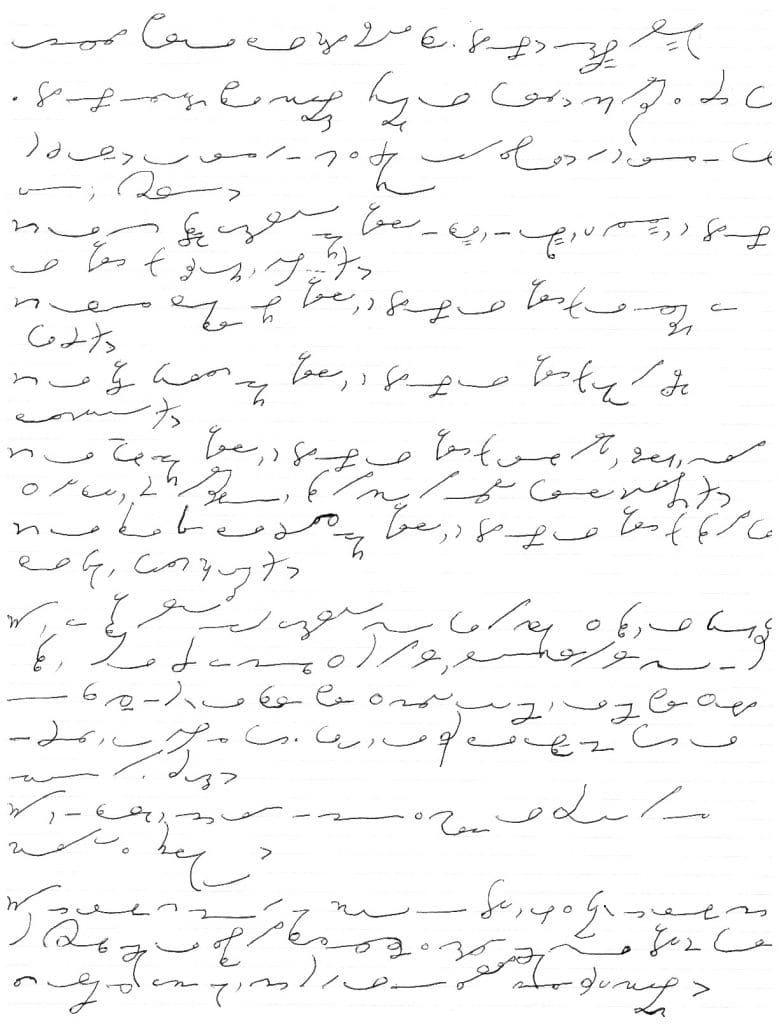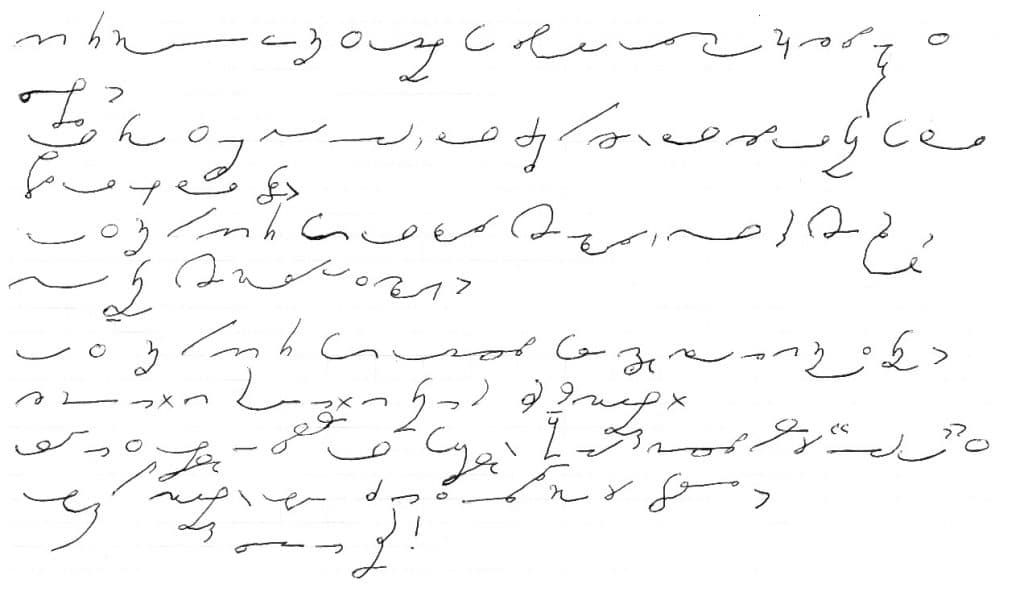Désolé de l’écriture tremblante et de la qualité de l’image… sans parler des erreurs éventuelles, que je vous invite à relever pour moi. Merci de votre relecture !


The Gregg Group was founded 22 May 2004, prompted by the lack of online shorthand resources. As the primary use for shorthand — business and legal recording — has waned in recent decades, we generally acclaim the skill as a hobby or personal tool. The purpose of the group is to promote the use of Gregg systems of shorthand by providing advice to beginners, support for students, and an association of users of this efficient, attractive, and enjoyable method of writing.
Désolé de l’écriture tremblante et de la qualité de l’image… sans parler des erreurs éventuelles, que je vous invite à relever pour moi. Merci de votre relecture !


You must be logged in to post a comment.
Nice and legible. Here are some corrections. There's a little mistake in the word exonerations: the a between the r and the ending -tion is missing. Also, in the country's name of Yemen, the second e circle is not necessary. Lastly, in the word pandemie, the a is written inside the curve formed by the p and the nd, and not outside.
I’m not sure what version this is, but in my view pandémie ought logically to be pan-dm-e with the a on the outside of the angle as with pandemic (pan-demic) in Simplified and DJS.
In English and in French Simplified, it is written like you said, but not in French DJS. The reason for that is that the tem blend expresses only -tème, -time, and -tume in French DJS. So the dem/dim meaning was removed from French DJS. It's one of those things that it's not the same in English and French, and that differs between French Gregg series. That’s why I pointed it out in the first place.
Thank you for the explanation, Carlos! But why doesn’t the logic of the split pan-démie still apply?
As Carlos was explaining, there doesn’t seem to be a specific blend for "-dem-", at least according to my DJS manual that only teaches the smaller blend for din/tin, and then the similar but larger blend which is only used for teme/time/tume, but not for dem/dim/dume. I wonder why though… maybe there are more words in French with those syllables than in English, thus too many risks of confusion?
I never really understood this change in theory. There are plenty of words with dem in French, and to me it seems silly not to use the blend without having a transcription issue. But Sister Marie Thérèse thought otherwise…
Because if you write as you suggested, with the a outside the angle between p and n, then all letters of the word would have to be separated (p-a-n-d-e-m-e), eliminating the formation of the nd blend (remember, no dem blend in French DJS). But since we can (and should!) form the nd blend, and since p connects to nd without an angle, the circle has to go inside. In other words, if you want to blend the nd, the circle goes in (more legible and distinct).
Again, thanks for the further explanation! I can see that without the ***dem*** blend, using ***nd*** makes for a smoother outline.
Bingo!
Thank you Carlos. Very useful feedback as usual!
It’s hard for me to remember when to include the vowel before "-tion" and when not to. Is there a logical explanation that would make it easier to remember the rule?
The circle vowel is eliminated when -tion comes after forward straight strokes, that is, when it comes after n, m, t, or d: -nition, -nation, -mition, -mation, -tition, -tation, -dition, and -dation. The circle is eliminated because the two connecting straight lines (n, m, t, or d + -tion) are much easier and faster to write when there are no circles between them. However, remember that the circle is written in the words nation and mission for legibility purposes.
Quiz: How would you write (1) émission, (2) dénomination, (3) administration?
Like so?
I guess my M in émission is really long. Is the rest fine? I think I got it, it’s true that trying to make a circle between two straight lines makes me bend the straight lines. I actually have a really hard time righting nation properly without bending my N in anticipation of the A.
Very good! Yes, when a circle is inserted outside two lines that form an angle, there's a tendency for the first line to curve. That can be minimized if one writes the circle very quickly after writing the line.
Hello, Aymeric !
Nice to see your texts again, alas in those circumstances.
A tough nut to crack for me… But I understood most of it (a bit too tight the lines, if you allow me).
Did the author really say ‘petit machin’ all along? 🙂
He did!
Thanks for the advice, it’s true it looks too cramped.